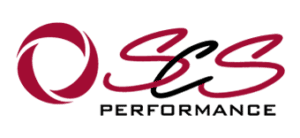Mastering Effective Business Reporting
To run a business efficiently and profitability takes more than just luck. In addition to having a good service or product, successful businesses typically have a strong management information framework in place to ensure all of the critical elements of the business are running correctly.
I often liken this information to the dashboard instruments in a car – where you have a range of information to let you know how you are travelling and the condition of the car. A good management information pack does the same for a business.
Every business has “key elements” in it which dictate the success of the business. They may be stock turnover, number of store visits, the volume and duration of web site hits, pure sales volumes or the number of client contacts – with each of these potentially being a “dial” on the dashboard.
Over the years, I have found that the list of potential reporting elements is very large, but in all reality, each individual business only has a handful. In addition to the key elements which are very specific to the type of business, there is also a few regular items which every business should monitoring for success.
So when I was recently asked what information I would use to run a business, I responded with 5 key categories, with some pertinent measures under each. The categories were, Financial, Operational, Marketing & Sales, Strategic and Successes/Learning’s, with the individual measures or reported items under these more aligned to the individual nuances of the business – albeit businesses in the same industry will be similar.
A example of these would be;
Financial Measures – hindsight
- Hindsight review of Mth and YTD trading data, reviewing not only the bottom line, but also performance to budget and key margins/KPI’s as pertinent to the business.
- Aged Debtor and Creditor positions to ensure that these are all within accepted parameters. Debtor listings should get close scrutiny with defined actions for any problem clients.
- Forward looking Cashflow position for the next 30-90 days, identifying any immediate issues for attention.
Operational Measures – efficiency
- Work in progress – current volumes, production issues and wastage.
- Process or system changes.
- Staff leave, rostering, recruitment, training and development.
- Depending on the forum – this could also include other HR related items, such as performance & remuneration etc.
Marketing & Sales – proactive
- Pipeline Management – 90 day funnel across Target, Prospect, Proposal, Acceptance and Delivery. How you manage these is literally an article in itself, but you want to ensure that the requisite “activities” are being undertaken at each stage, with quality measures then assessing effectiveness.
- Marketing activities – current return on existing, along with planned activities.
Strategic
- Reference back to the businesses core plans and strategies.
- Use this as a reminder for what is being focused on, check for forward planned activities and overall to ensure that the defined strategy still holds relevance in what is a changing market. I’m not saying that I would change the strategy, but I do like to challenge to ensure that it is still correct.
- I would normally cover new products / initiatives here as well.
Successes / Learning’s – risk and reward
- Whilst these may be referenced in the other areas as well, I like to ensure that these have a position of their own. Too many successes are not acknowledged – and they should be.
- Equally, if there has been a problem or an issue, draw the learnings from it and see how it can be applied back to the operations to prevent it reoccurring.
Combining these into a single monthly reporting pack provides the business management team with a very strong picture of how the business is performing, using a combination of lead and lag measures.
To understand what reporting information is relevant for your business, contact us to arrange a Business Diagnostic Review, as this will quickly show key areas for your business and we can then provide recommendations on how to report it for optimum value.
Business management does not need to be hard. With the correct information in your hands in a timely manner, shown in a meaningful way, means that you can spend more time running your business and less time analyzing an endless sea of numbers and stats.












